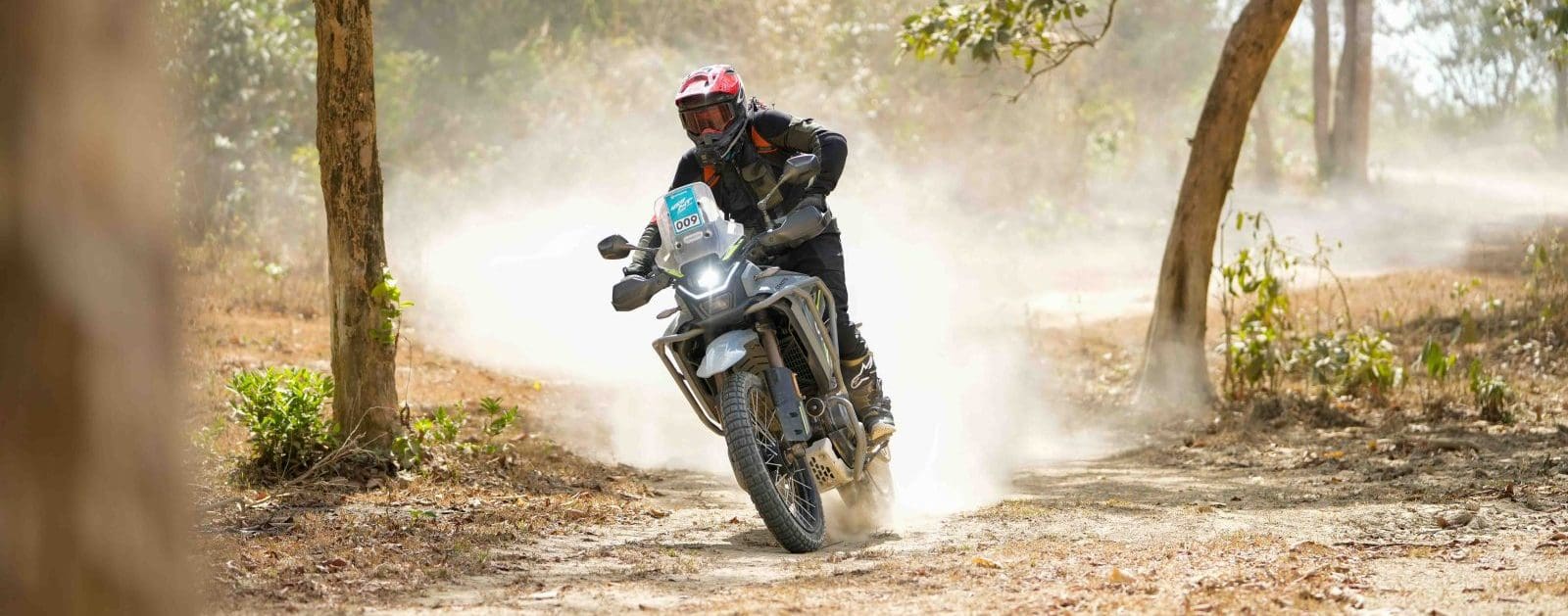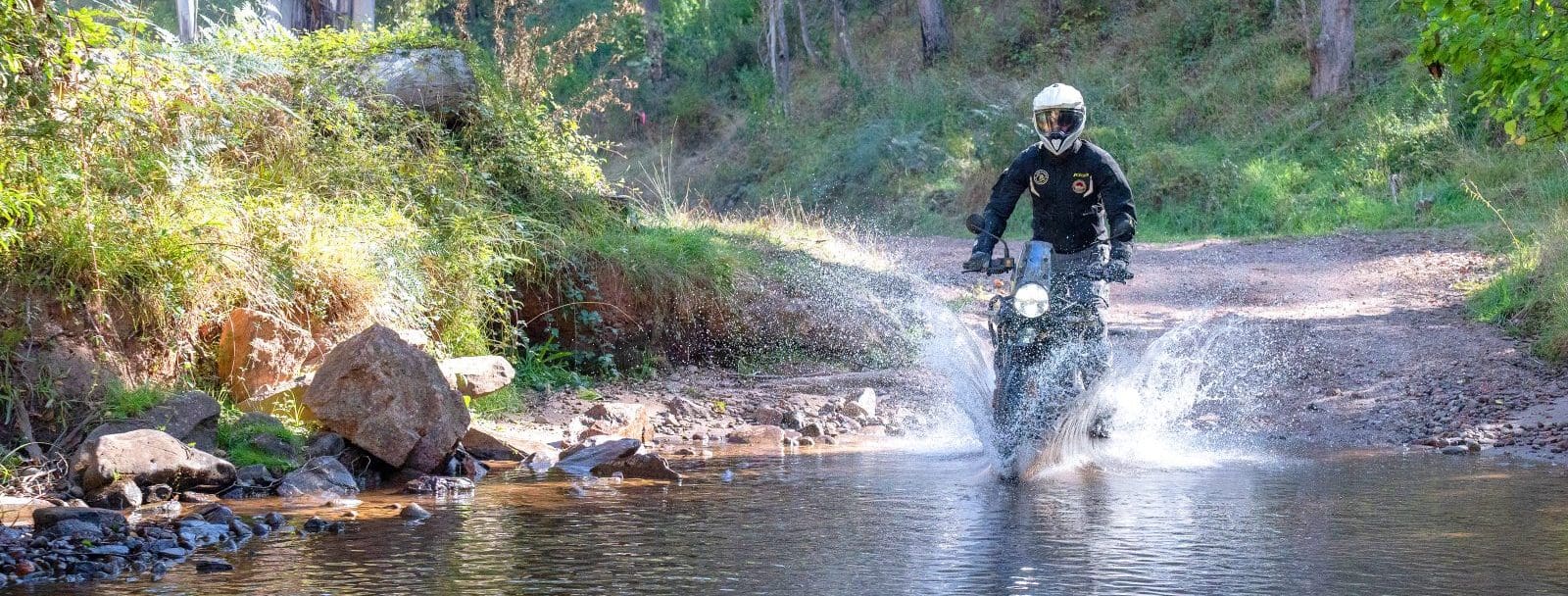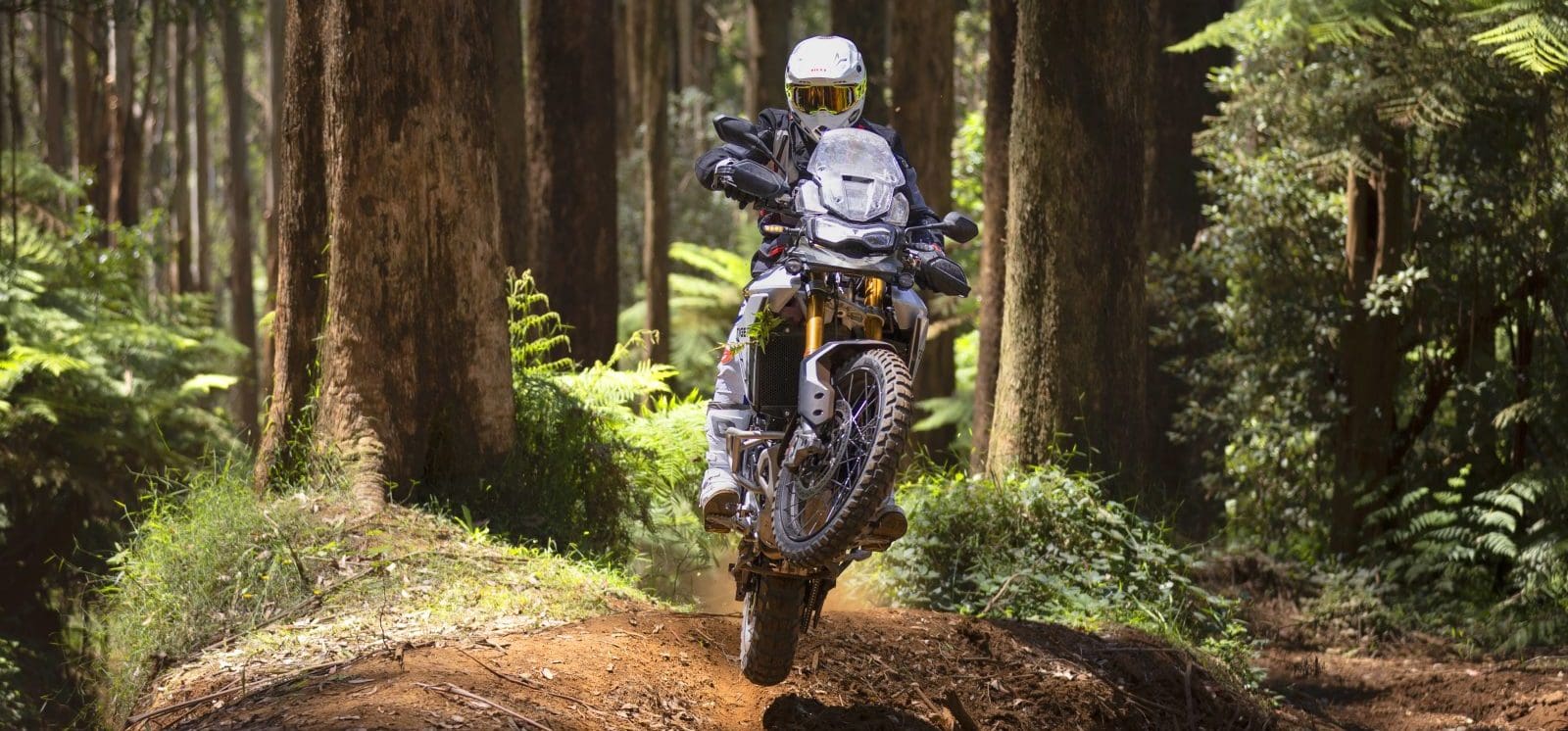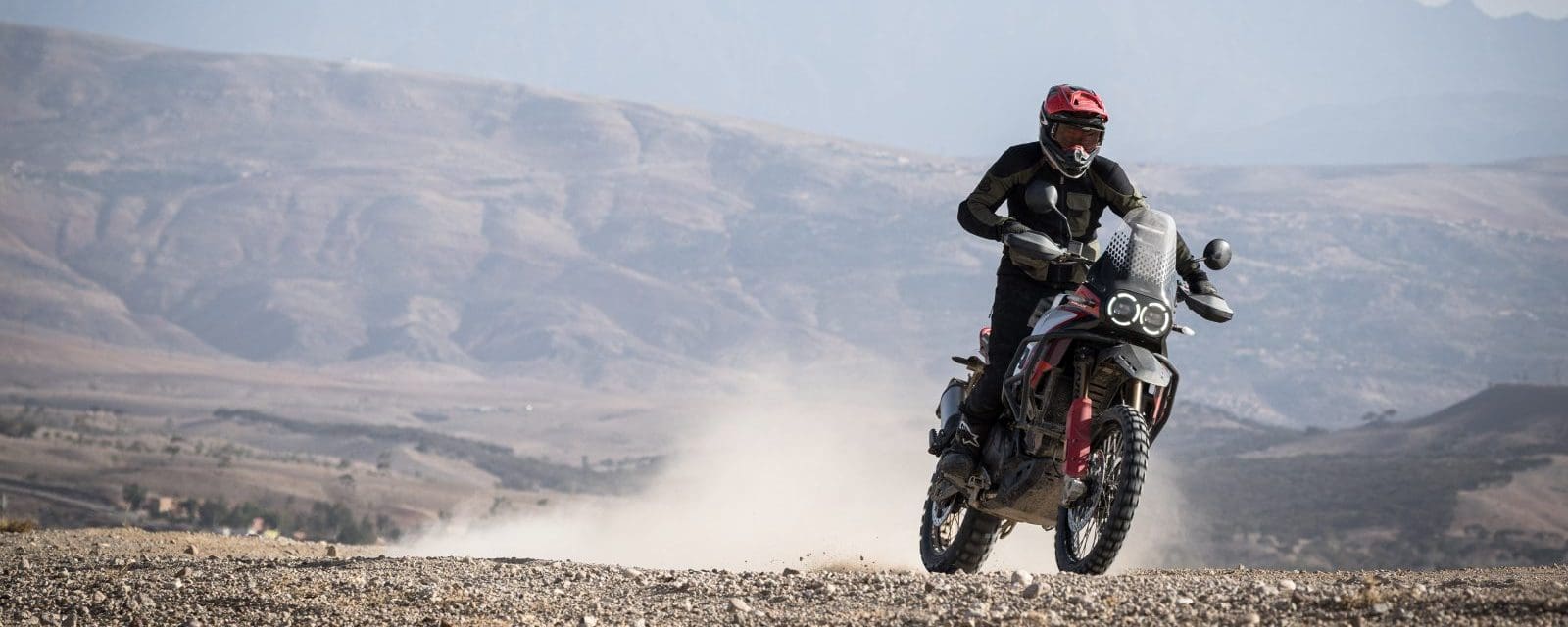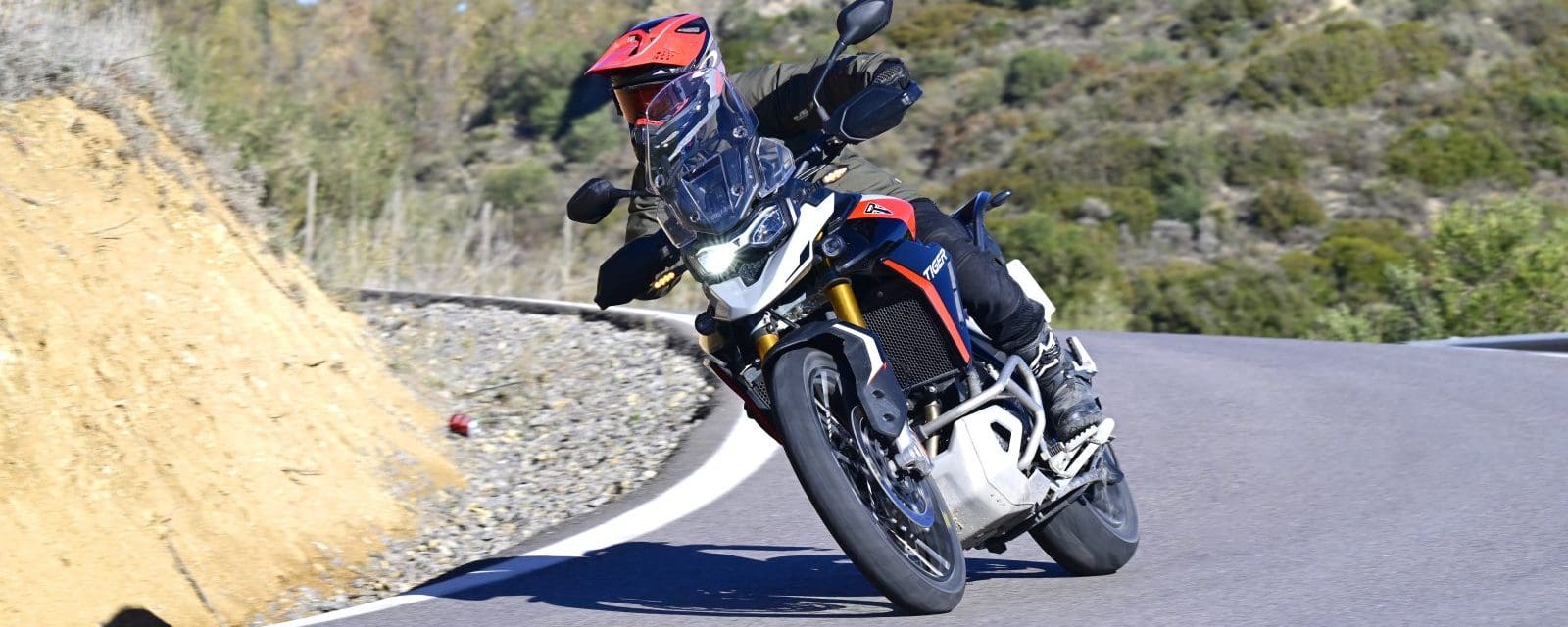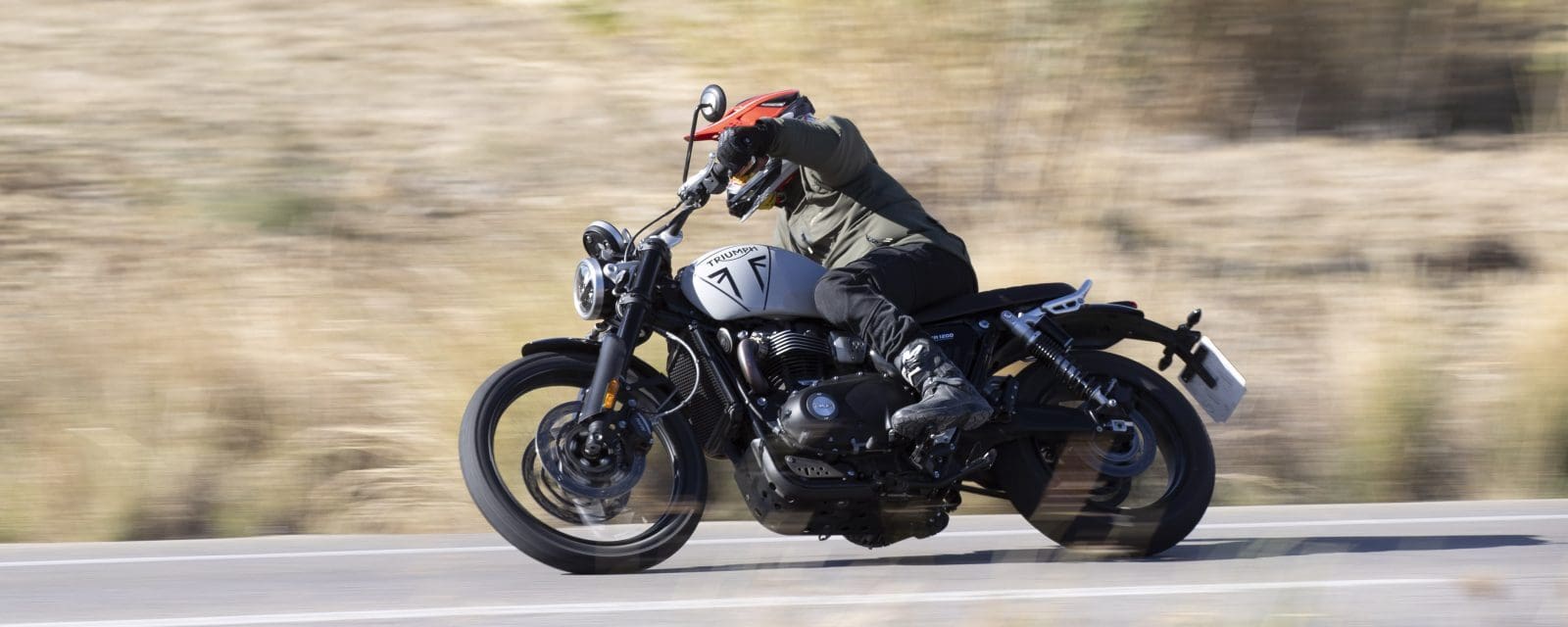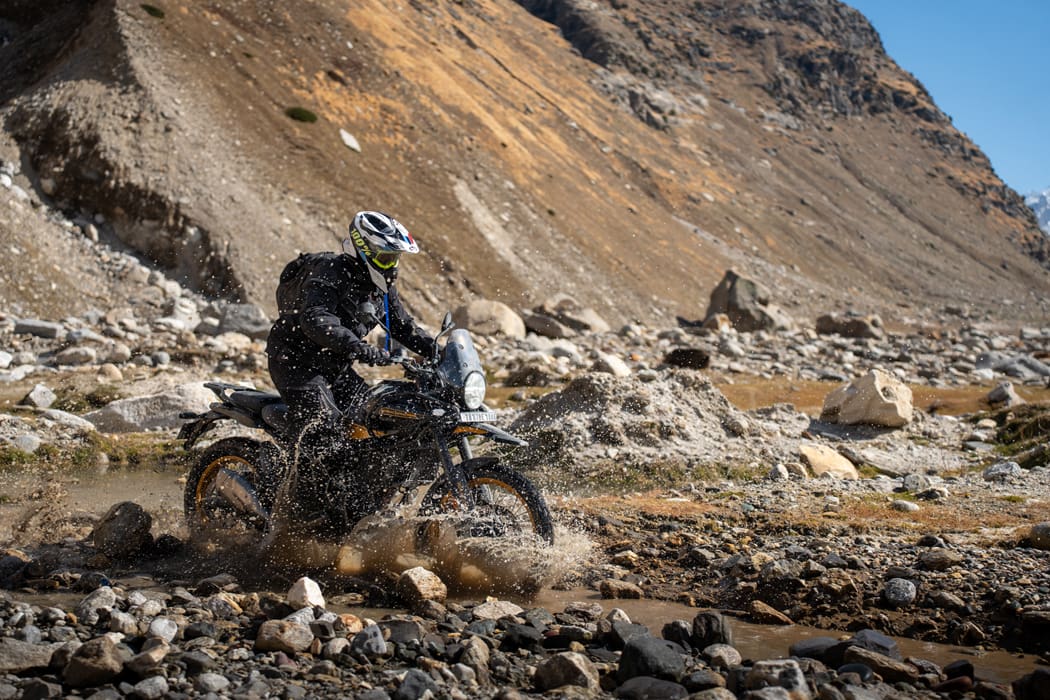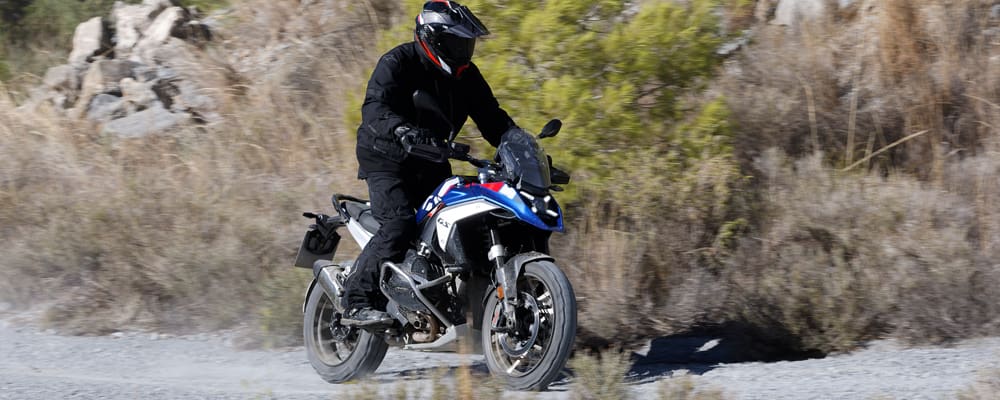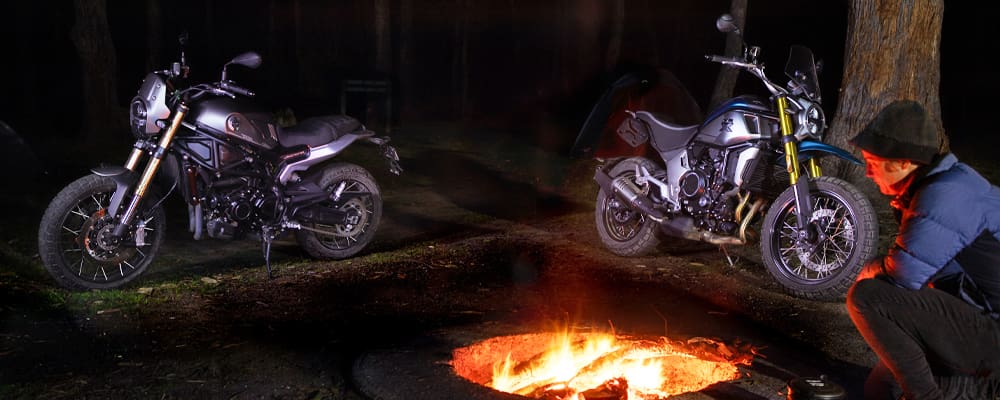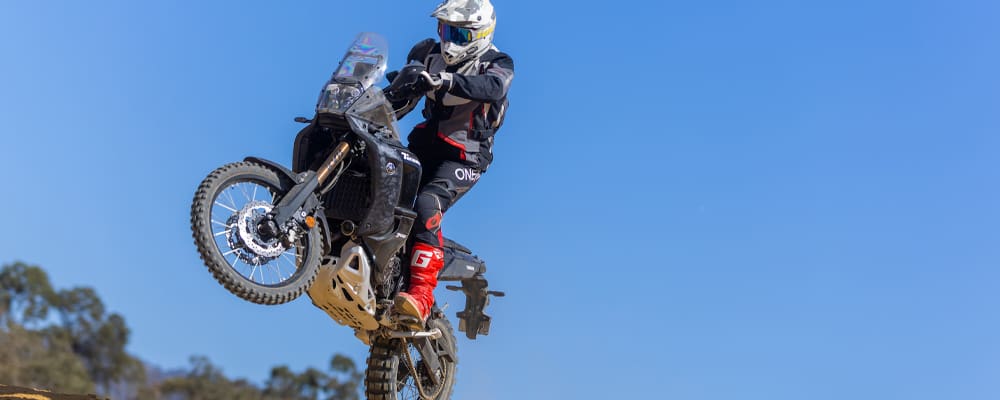These days it is not very often that I get the call up to ride a brand of motorcycle that I have not previously ridden, but that happened recently when I got the call from AMCN editor Deano to see if I was available to go and test the new Triumph Tiger 900 Rally Pro.

As a former professional off-road racer, a large percentage of my motorcycle riding these days is on your traditional enduro bikes that are quite a lot smaller in overall size compared to your average adventure bike. However the last 12 months has seen me spend quite a bit of time crossing the Australian Outback on various brands and capacity adventure bikes. Seeing the Tiger 900 Rally Pro in the metal for the first time, my initial impression was it looked pretty compact and well proportioned compared to some of the big bikes in the class.
With a moniker like ‘Rally Pro’, as well a 21-inch front wheel and generous wheel travel, I’d expected a bevy of gadgets and technology to make it capable of living up to the name – and this is very much the case. Going off my previous adventure riding experiences, a quick scan of the Tiger’s specs told me there’s nothing missing that I would be potentially looking for to keep me comfortable, safe and quick.
To kick the test ride off we had roughly an hour of sealed tar riding to get out of the city and into the mountains above Melbourne. I used this transport section to press any and every button in sight in a bid to try and learn each one’s role in getting the most out of the bike’s features. My computer skills are pretty much limited to operating my iPhone, so luckily for me Triumph has kept everything pretty straightforward and user friendly. The few times I found myself lost and deep into the settings, all I had to do was one press of the home button to bring me back to the start. As an aside, because I am so used to riding in thin motocross jerseys and gloves, it probably took me a good 60 or so kilometres to feel comfortable decked out in thick adventure riding kit!

Anyway, by the time we had arrived at our first section of dirt I was more than comfortable toggling between riding modes and I knew how to activate most of the gadgets, like the heated grips and seat. Triumph made sure I was aware that the Tiger has been its best-selling model for multiple years, so with that in mind combined with the fact that the Rally Pro is the top-tiered model in the Tiger 900 range, I was keen to push the thing to its limits to see if and where its adventure boundaries lie.
I devised a quick plan; suspension and handling first, because power is useless unless you can use it. Next I’d test braking capabilities – the last thing you want to discover at inopportune times is that a 228kg bike doesn’t want to stop. Next was engine performance and nature, before finishing off with the ergonomics and, given most areas of the new bike are adjustable, there’s a bit of evaluation to do in terms of the ease and effectiveness of the adjustability available.
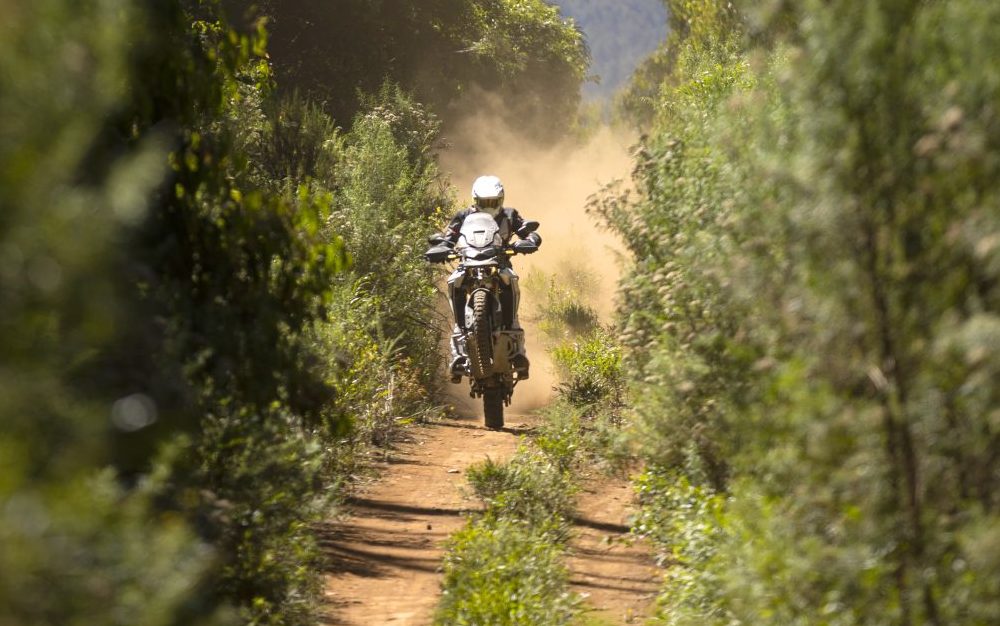
Handling
As fate had it our first 20km of dirt happened to have pretty much everything you would experience in the Australian outback except deep sand. With my bike set to its Off-road settings – you can find these exact settings in your user manual – it did not take me long to work out the strengths and weaknesses of this set-up.
Overall, both the fork and shock were very comfortable and forgiving on all the little stones, bumps and corrugations, but as soon as I picked up the speed and hit anything reasonably big (don’t forget Grabbo’s ‘reasonably big’ and yours and my ‘reasonably big’ are two very different things – Ed), both ends bottomed out pretty hard. But to be completely honest, I probably didn’t expect anything less from a 230-odd-kilo motorcycle.
To give it the best chance, I started adjusting both ends of the suspension to see what the bike was actually capable of and to begin with I started with the fork compression. Adjusting the fork’s compression and rebound settings are both done without a tool and, thanks to the adjuster knobs on the tops of the fork legs – that even I can operate with thick adventure gloves on – you can make suspension adjustments at a standstill and without having to get off the bike.
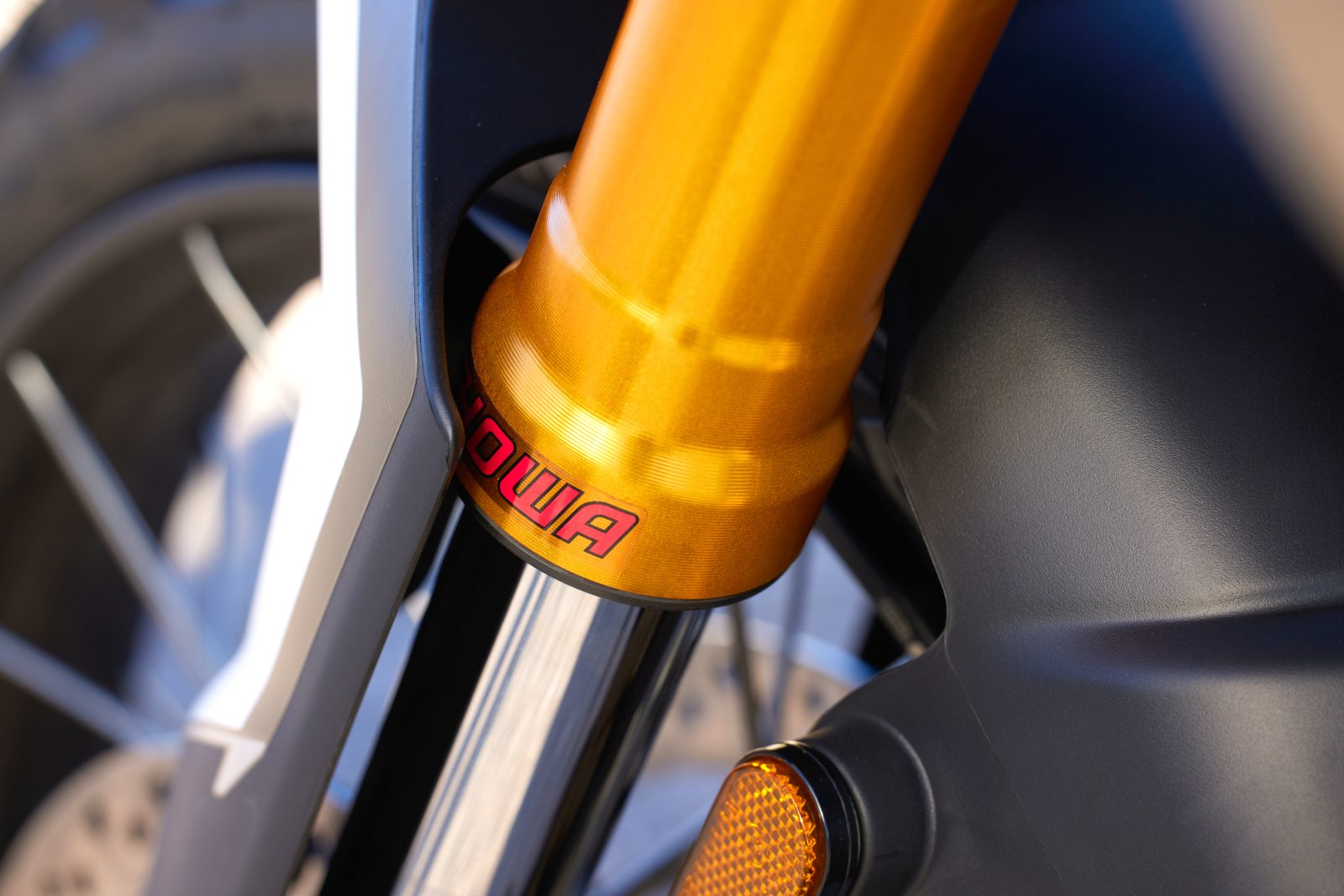
To begin with I only went four clicks stiffer on the compression, which returned an incredibly positive response, so I just kept making it gradually stiffer until I was happy. But now that the fork was more than capable of launching some reasonably big contour banks, I found the rebound action was slightly fast, so I slowed the rebound action down a few clicks on the other fork leg. Before I knew it, and without getting off the bike, I had the Showa front end feeling like it was made for me.
I shifted my focus to the rear shock, which was also bottoming out and making the Tiger feel really kicky and loose in the rear end. At first I wanted to firm up the compression however, much to my disappointment, the shock doesn’t have an external compression adjuster, however it does have tool-less preload and rebound adjusters. Experience has taught me there is always another way to accomplish the same result, so I wound some extra preload onto the shock spring and then slowed down the shock’s rebound via the adjuster.
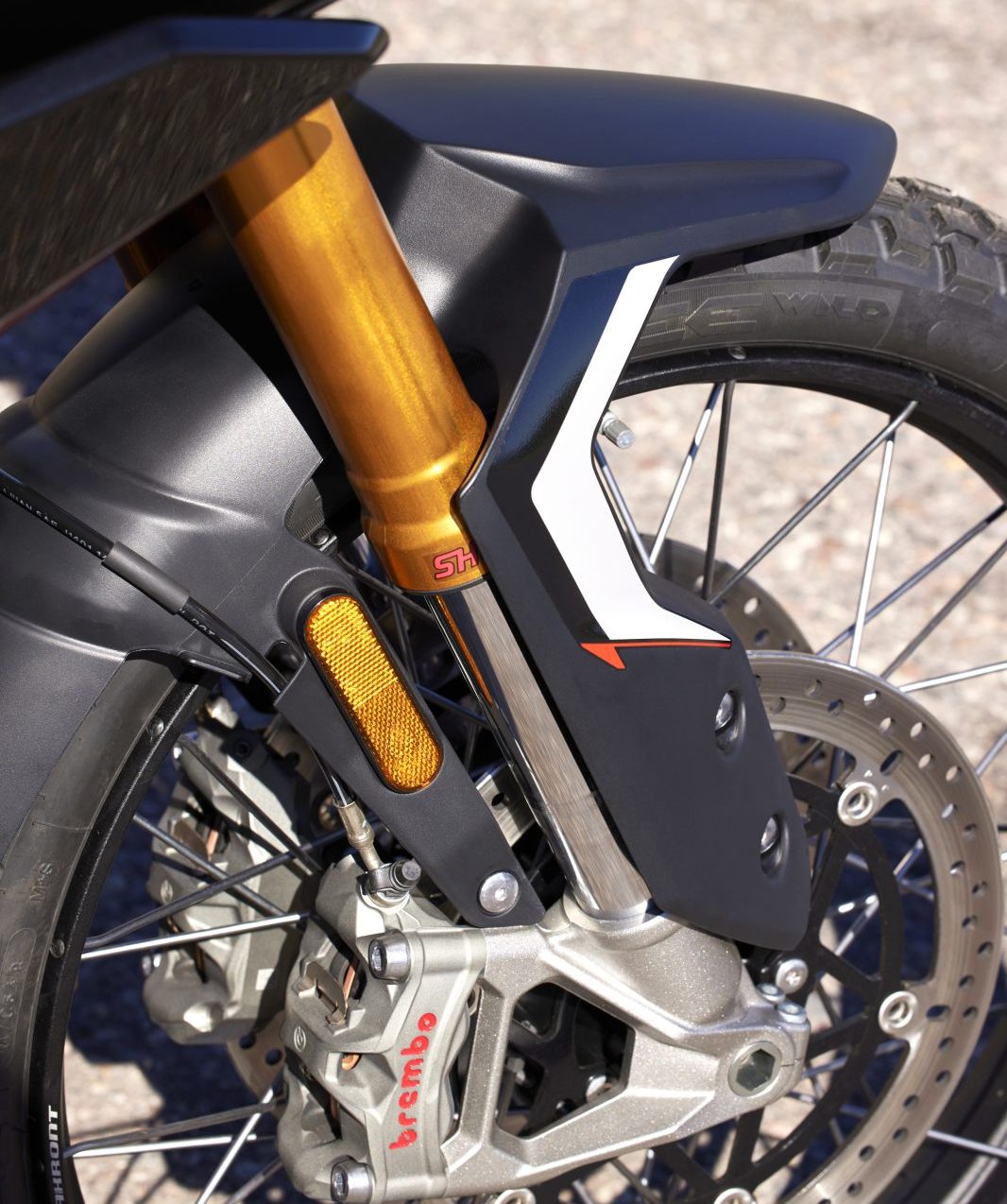
Just like I had hoped, this achieved the desired outcome. Now the shock rode very calmly, no longer kicking or bottoming out hard. Even though all my adjustments were aimed at firming up the action, I didn’t feel like I had lost any comfort or feel in doing so (see breakout to find the exact setting I used – and if you are trying to understand what you may like compared to myself, look at my weight and height, and adjust settings accordingly).
Brakes
Now that I was happy with the suspension performance I moved my attention to the brakes and their different options. On a sealed road I preferred and could not fault the performance of both ends with ABS activated. On the dirt, I first tried the Off-road Pro setting that deactivates both ends of the ABS function. I like the rear brake like this because I can feather the brake pedal and drift the rear wheel into corners. However I didn’t like the front so much without ABS as it was way too powerful and I often found myself locking the front wheel.
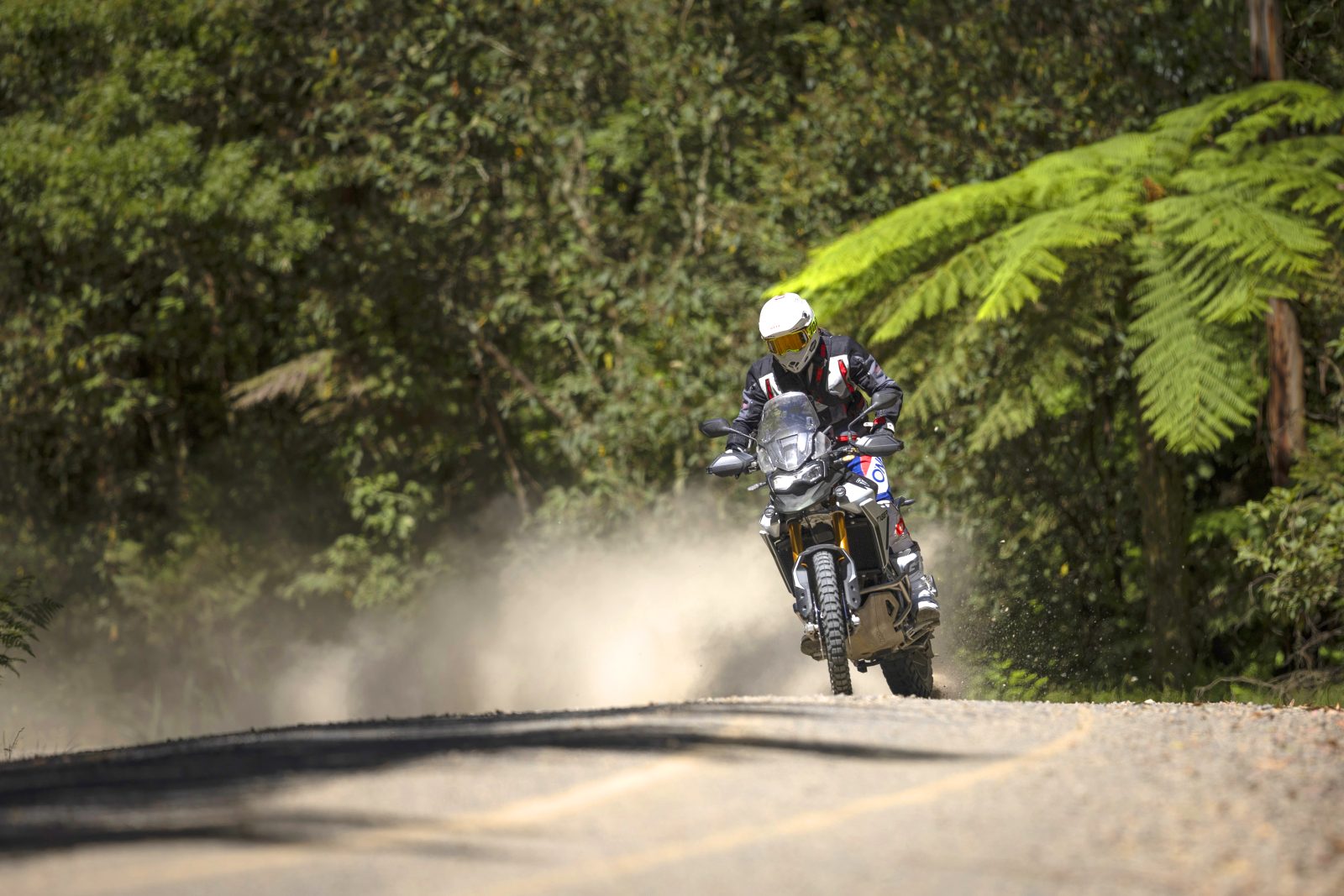
By far my favourite braking mode was Off-road as this is where the rear brake has no ABS activation and the front has full ABS intervention, which allowed me to take advantage of the very powerful twin-caliper front brake but without any scary lock-ups. It’s important to note that if you are riding the bike in Off-road Pro mapping, you will need to dive into the settings to activate Off-road ABS, or to switch off the ABS entirely.
Engine
Next up I moved my attention to the heart of this package, the 888cc triple-cylinder power plant. Straight up this is one of the coolest sounding bikes I have ridden. For people old enough to remember, it almost sounds like a mini V8 engine as it purrs its way through the rev range.
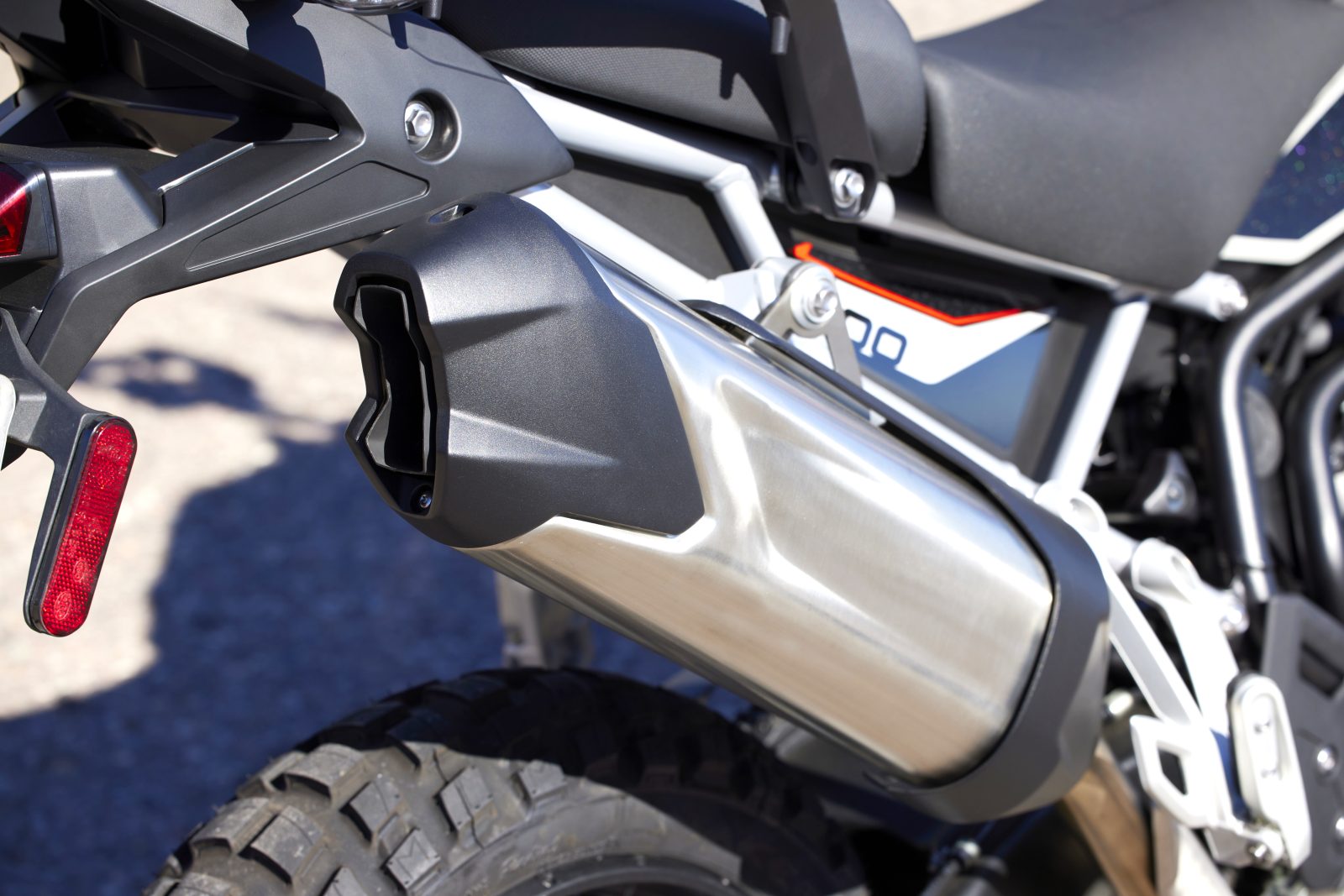
Claimed output is 79.5kW (106.6hp) at 9500rpm combined with 90Nm of torque quite a bit earlier at 6850rpm, and I don’t doubt that for a second as this thing rips if you let it. The standout of this engine for me was how smooth it always produces power, even if I was in a tall gear purposely trying to cause some transmission snatch, but it just purred along with no chain noise at all.
In terms of the switchable engine maps, Sport mode on the tar was the easiest way for me to lose my licence, but I found Off-road Pro was my favourite power mode – even on the blacktop – as it still has tons of power for every situation. The sweet spot in the rev range for me was between 3000-5000rpm; in this window the bike is super lively but still relatively gentle, all while sounding amazing.
Ergonomics
Feeling pretty comfortable with the suspension, braking and engine performance, I turned my attention to rider comfort. When I first started riding the seat was in the optional higher (880mm) setting, so halfway through the ride I changed it over to the lower setting (860mm) and never went back, as the lower setting suited my 177cm stature perfectly and made getting my feet on the ground that much easier.
For 2024, Triumph has shifted the handlebar 15mm rearward toward the rider. Even though I didn’t ride its predecessor, I am not going to argue – the ’bar is in a comfortable position for both sitting and standing.
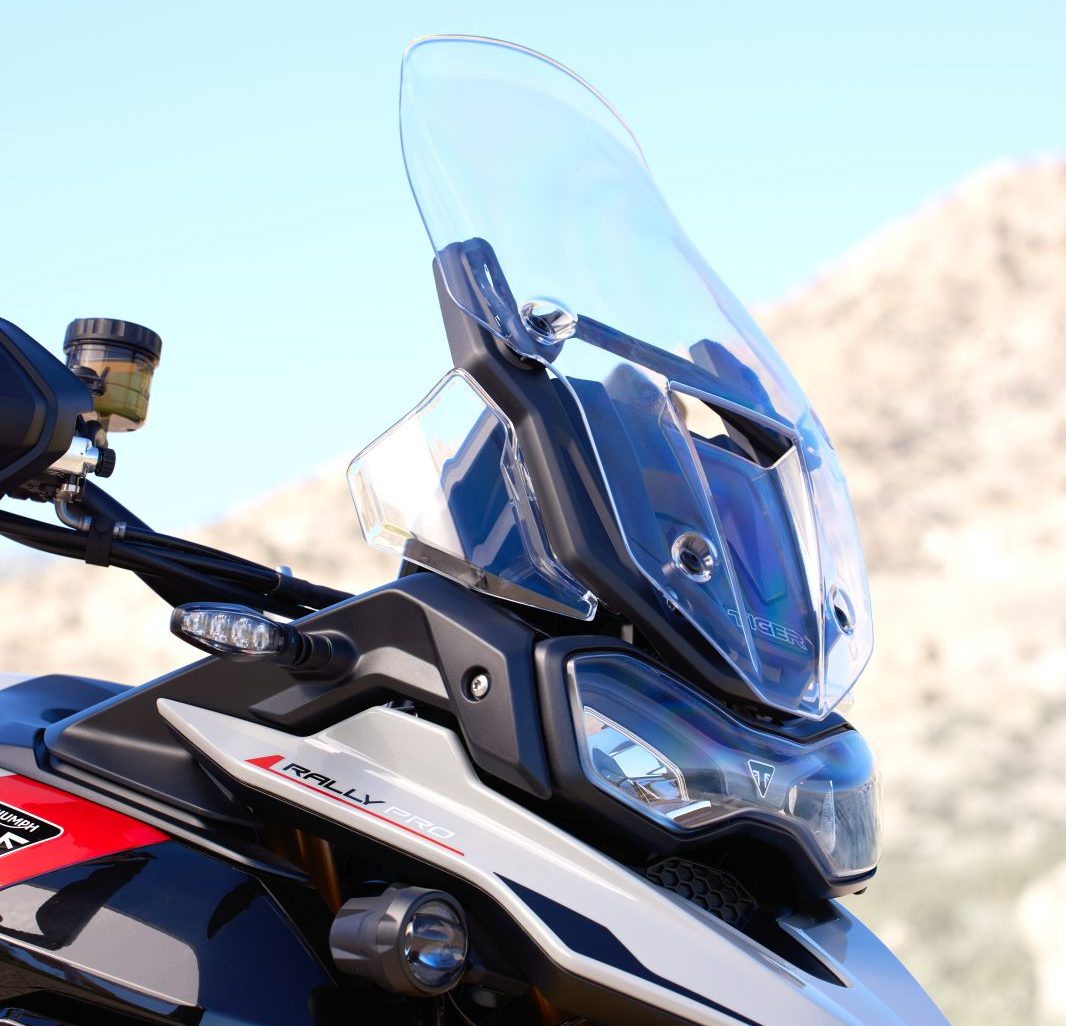
The footpegs come with rubber inserts. I took these out as I prefer the more grippier option and don’t like how slippery rubbers can become when they are wet. The rear brake pedal has two height options of, again, tool-less adjustment. I preferred the taller setting as I tend to stand more when I use the rear brake.
It was quite chilly during our second morning on the bike, so I took the opportunity to play with the heating options. Both the heated seat and heated grips do a fantastic job of keeping you comfortable and your concentration where it needs to be. The windscreen has quite a bit of height adjustability – which can be done on the fly – and I found the low setting best for off-road riding and the tall option worked best for dealing with wind buffering at speed on the open roads.
The verdict
Overall I felt quite at home cruising along on this bike and could happily spend long hours exploring the country on the Triumph. Priced at $25,990 (ride away), it’s far from a cheap motorcycle, but it’s pretty well appointed and ergonomically adjustable, meaning you won’t need to throw much extra at it in order to make it feel like your own, if off-road adventure riding is your thing.
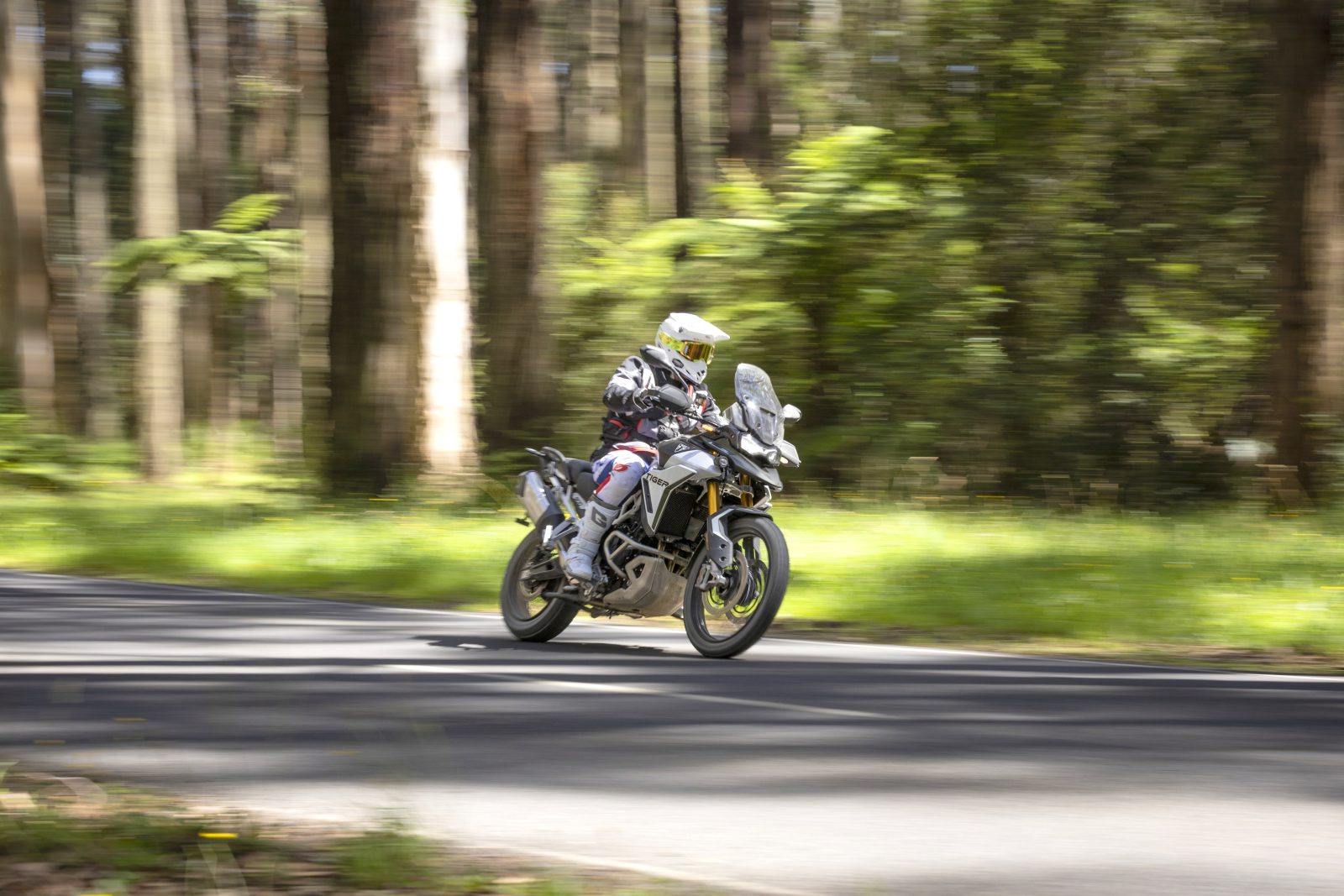
Honestly, I was guilty of riding this bike more like a motocrosser than the adventure bike brief it was designed to meet during this launch and it showed itself to be way more capable than I predicted. More than a few times when I sent it flying off table drains I found myself landing in terrain where I probably wouldn’t take many adventure bikes. But the worst thing that resulted from it was a raised heart rate.
The geometry on this chassis has clearly been perfected over the years, as it always corrected itself in every ugly situation. Even when I was trying to find things that I would potentially change, I could only find the one; the footpegs. They are too narrow and, because of that, I found they put a little bit too much weight on the one part of my boot and on hard landings I felt they didn’t provide enough support. Other than that I would be more than happy to load it up with saddlebags and venture around our great land.
PROS: The years of refinement are clear in the new machine, and triple-cylinder engine is a peach.
CONS: The footpegs need to be wider to improve support (and comfort) for the rider.
WORDS: BEN GRABHAM PHOTOGRAPHY: DEAN WALTERS
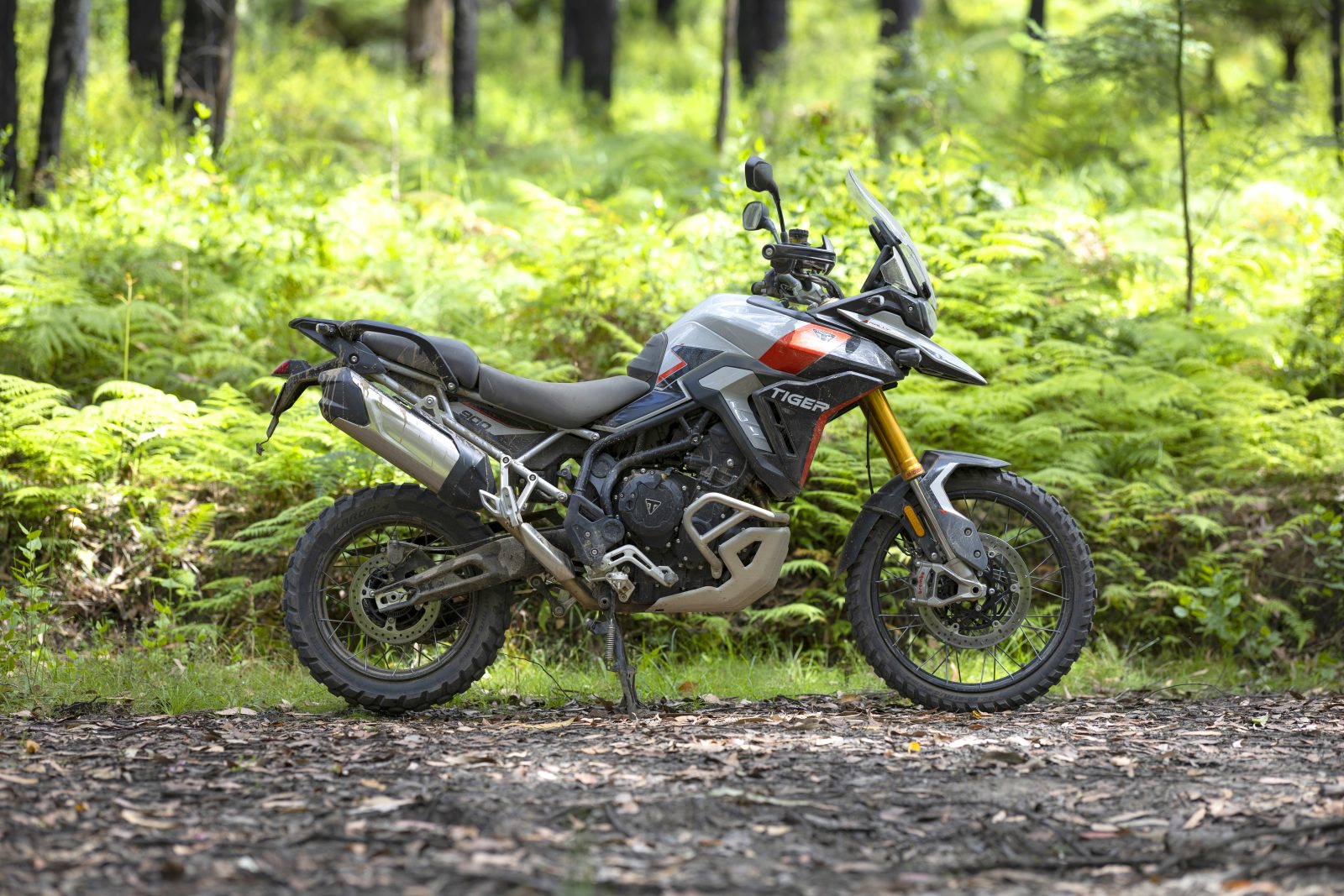
FRAMING GUN
There’s a tubular-steel frame and a twin-sided cast aluminium swingarm. The wheels are tubeless and spoked, a 21-inch front and a 17-inch rear.
ROCK AND ROLL
At 228kg ready to ride, it’s no lightweight. And even though it can occasionally feel slightly top heavy, overall it’s well balanced.
MEASURE UP
The inline triple-cylinder engine measures 78mm x 61.9mm for a capacity of 888cc. There are four valves per cylinder and it has a 13.01:1 compression ratio.
AT YOUR SERVICE
Service intervals are set to every 10,000km or 12 months, whatever comes first. The warranty is still set at two years, unlimited kays.
RUBBER BANDS
Bridgestone supplies the standard rubber, which are Battlax Adventure hoops.The front is a dirt-friendly 90/90-21, the rear 150/70-17.
SPECS

ENGINE
Capacity 888cc
Type Inline triple, DOHC, four valves per cylinder
Bore & stroke 78mm x 61.9mm
Compression ratio 13.0:1
Cooling Liquid
Fueling EFI
Transmission Six-speed
Clutch Wet, multi-plate, slip & assist
Final drive Chain
PERFORMANCE
Power 79.5kW (106.6hp) @ 9500rpm (claimed)
Torque 90Nm @ 6850rpm (claimed)
Top speed 230km/h (est)
Fuel consumption 5.1L/100km (measured)
ELECTRONICS
Type Not given
Rider aids Cornering ABS, traction control
Rider modes Sport, Road, Rain, Off-Road Pro and Rider Configurable
CHASSIS
Frame material Tubular steel
Frame type Trellis
Rake 24.6°
Trail 102.7mm
Wheelbase 1556mm
SUSPENSION
Type Showa
Front: 45mm, USD fork, fully adjustable, 240mm travel
Rear: Monoshock, fully adjustable, 203mm travel
WHEELS & BRAKES
Wheels Tubeless, spoked
Front: 21 x 2.15 Rear: 17 x 4.25
Tyres Bridgestone Battlax Adventure
Front: 90/90R21
Rear: 150/70R17
Brakes Brembo
Front: Twin 320mm discs, four-piston Stylema calipers
Rear: Single 255mm disc, single-piston caliper
DIMENSIONS
Weight 228kg (wet, claimed)
Seat height 860-880mm
Width 935mm
Height 1452-1502mm
Length Not given
Ground clearance Not given
Fuel capacity 20L
SERVICING & WARRANTY
Servicing First: 1000km
Minor: 10,000km
Major: 20,000km
Warranty Two years,
unlimited kilometres
BUSINESS END
Price From $25,990 (ride away)
Colour options Carbon Black/Sapphire, Ash Grey/Intense Orange (+$350) or Matt Khaki Green/Matt Phantom, Black (+$500)
Contact triumphmotorcycles.com.au


